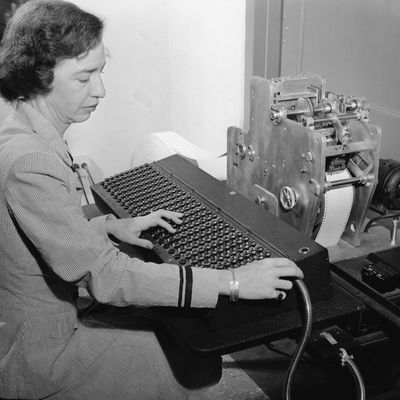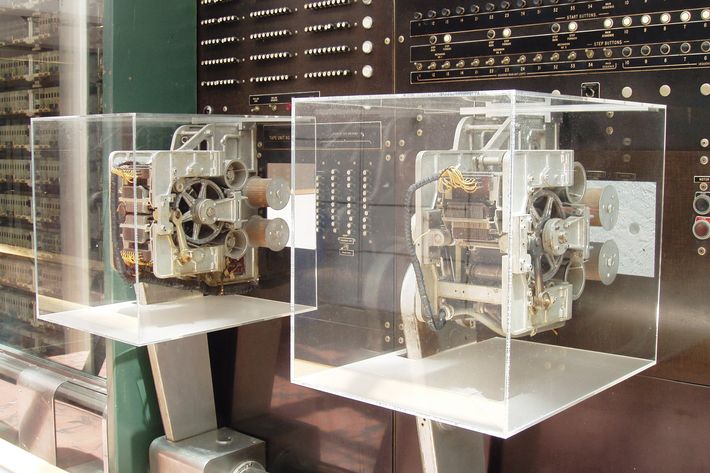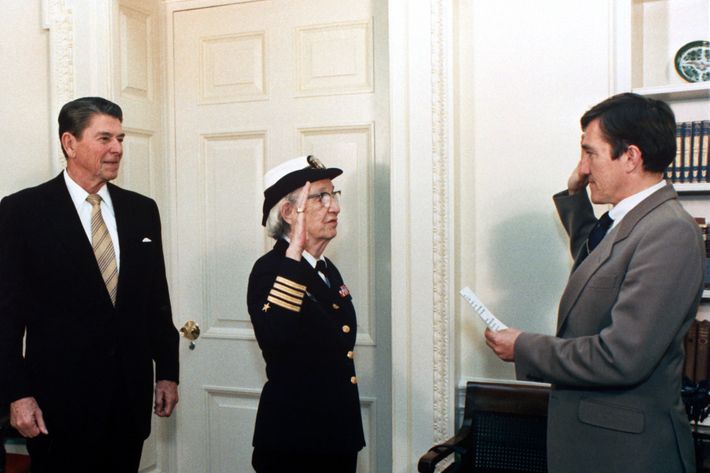
One of the greatest technology pioneers of the 20th century is someone most people have never heard of. Yet without this genius there might not be smartphones and apps, a video games industry, or even the internet. We now take it for granted that a computer can be operated by anyone with no special training, and that anyone can learn to code if they want to, but it was a brilliant woman, Rear Admiral Grace Hopper, who struggled for 15 years in the middle of the 20th century to make that vision a reality.
During the Second World War, the Harvard Computation Laboratory housed early computers used to solve problems in ballistics. These machines had to be programmed by literally plugging in and unplugging hundreds of physical cables. In 1944, Grace Hopper, a 37-year-old math Ph.D., joined the Navy as a lieutenant and was assigned to that lab. Her group also included the soon-to-be famous mathematician John von Neumann, and together they laid down some of the fundamental principles of computation. (Some historians actually argue that von Neumann took credit for Hopper’s ideas at the time.)
But it was after the war that Hopper had her big idea. By then computers were programmed in machine code, which to the untrained eye looks like hexadecimal gibberish — B0 61 E3 79, that sort of thing — but which was still an improvement on a forest of plugs. Hopper wanted to make programming even easier. What if the user could type instructions into the computer that were easier to memorize than pure machine code? What if you could use normal English words like “if” and “stop”? And what if a program then automatically performed the tedious work of translating those instructions into a language the machine could understand? That would be a kind of automatic programming. Then, Hopper dreamed, programmers would be freed from the hundreds of hours of banal arithmetical manipulations required to write machine code, and they could concentrate on a more high-level, creative view of what the program was intended to do.

Hopper didn’t just dream: She made it happen. In 1951, she created the first “compiler,” a program that would translate a new, more human-friendly set of instructions into machine code automatically. This was a vastly more efficient system. In one test, the old-fashioned way of writing a program to solve a simple geometrical equation took three people more than 14 hours, of which a full eight hours was spent just on translating the program laboriously into machine-readable instructions using a code manual. The same equation was turned into a functional program using Hopper’s compiler by a single person in less than one hour.
Did the programming world fall over itself to hail Grace Hopper for her brilliant revolution? No. Quite the opposite, in fact. The head of computer operations at General Electric, Herb Grosch, led a vocal resistance movement for more than a decade. They argued that programming was far too delicate and ingenious an activity for any part of it to be left to the computer itself. It was clear to Hopper that programmers regarded themselves as “high priests,” jealously guarding their status as intermediaries between ordinary people and the occult computer brain. They felt that her compiler was a threat to their status. “Well, you see,” she said later, “someone learns a skill and works hard to learn that skill, and then if you come along and say, ‘You don’t need that, here’s something else that’s better,’ they are going to be quite indignant.”
Hopper spent a decade writing papers and giving conference talks while the computing priesthood tried to smack her down, but the tide only really began to turn when she appealed directly to business executives, the potential users of her product. To them she promised greater speed, efficiency, and ease. One of her early compilers was called “Business Language version 0,” which reflected her idea that programming could be made transparent and simple enough for office workers to understand. Her strategy finally worked. By the end of the decade, payroll and inventory applications were being written at various military departments and industrial corporations with Hopper’s own language, FLOW-MATIC — a system that hardcore programmers still mocked because it was too easy for ordinary people to understand.

Another source of resistance to Grace Hopper’s innovations is still all too recognizable today — sexism. In 1960, Hopper participated, along with several other female computing pioneers, in the development of the computing language COBOL (Common Business-Oriented Language). The majority of the elite computing “priesthood” predicted its rapid demise. According to one historian of technology, many of the skeptics had “concluded that the fruits of such an unstructured, female-dominated process could not be expected to survive, let alone flourish.” (By the year 2000, notwithstanding such prophecies, it was estimated that COBOL constituted about 240 billion out of the 300 billion lines of computer code in the whole world.) Yet things improved rapidly, in part thanks to Hopper’s own example. By 1968, according to an article in Cosmopolitan titled “The Computer Girls,” there were more than 20,000 women programmers working in the U.S., and there was demand for as many more: In this field, it said, sex discrimination was rare, and a woman could be “fully accepted as a professional.” Hopper told the magazine that programming was like planning a dinner: “You have to plan ahead and schedule everything so it’s ready when you need it. Programming requires patience and the ability to handle detail. Women are naturals at computer programming.” One hopes she was amused when, in 1969, the Data Processing Management Association presented her with its “Man of the Year” award.
In the face of incomprehension and jealous anger from most of her colleagues in the industry, Grace Hopper spent a decade-and-a-half predicting a coming “computer age.” Of course, she eventually won. The world of smartphones and social media has vindicated her totally. Yet the modern tech world arguably has more of a problem with women now than it did in the 1960s: A 2016 study found that code written by women was more likely to be approved by other coders than code written by men — but only if their peers didn’t know that the code came from women. And even though she didn’t live to see it materialize, our visionary heroine still had deeper thoughts about the world we live in now than most of today’s high-profile Silicon Valley entrepreneurs. “We’re flooding people with information. We need to feed it through a processor,” she once said. “A human must turn information into intelligence or knowledge. We’ve tended to forget that no computer will ever ask a new question.” When we consider the age of Big Data and increasing automation, it’s clear that Grace Hopper still has much to teach us.
Steven Poole’s Rethink: The Surprising History of New Ideas, published by Scribner, comes out November 15.